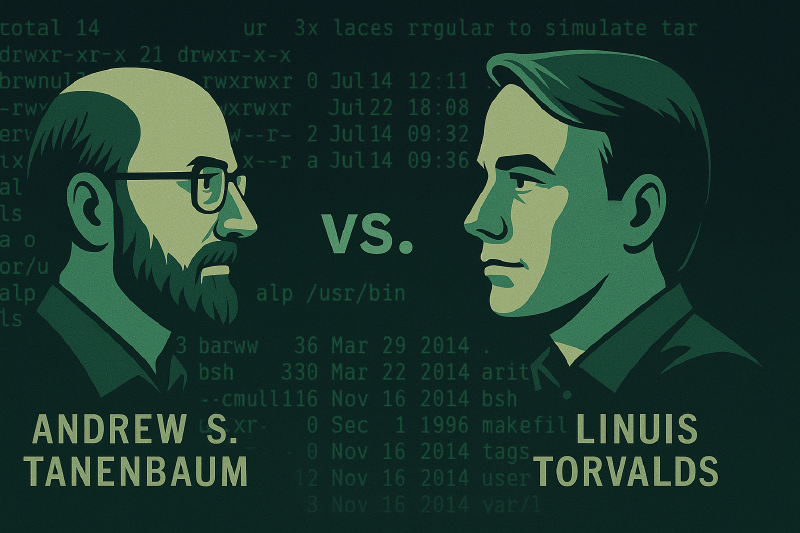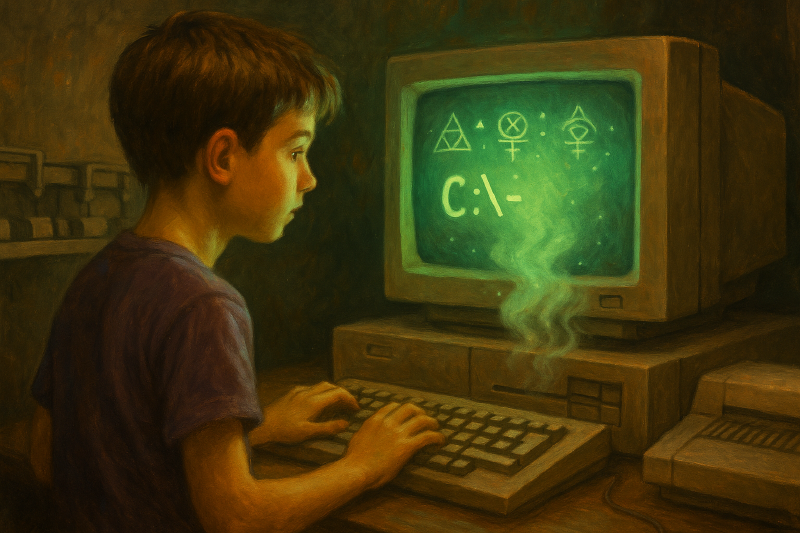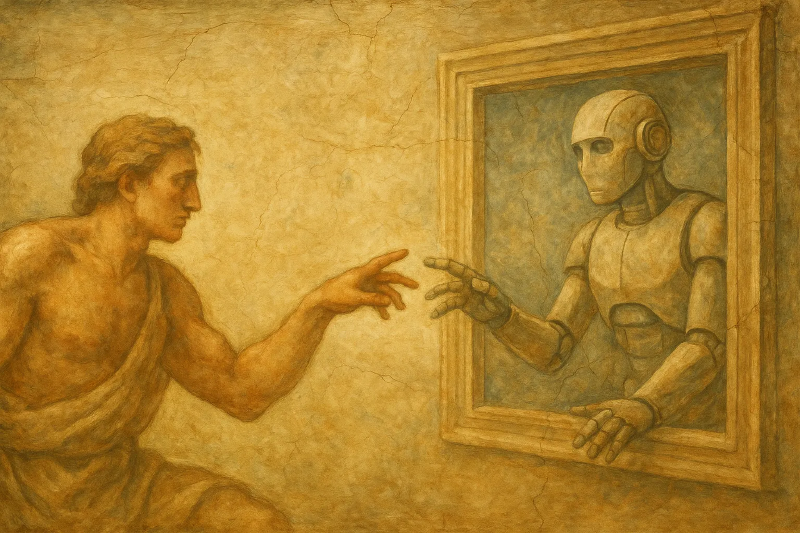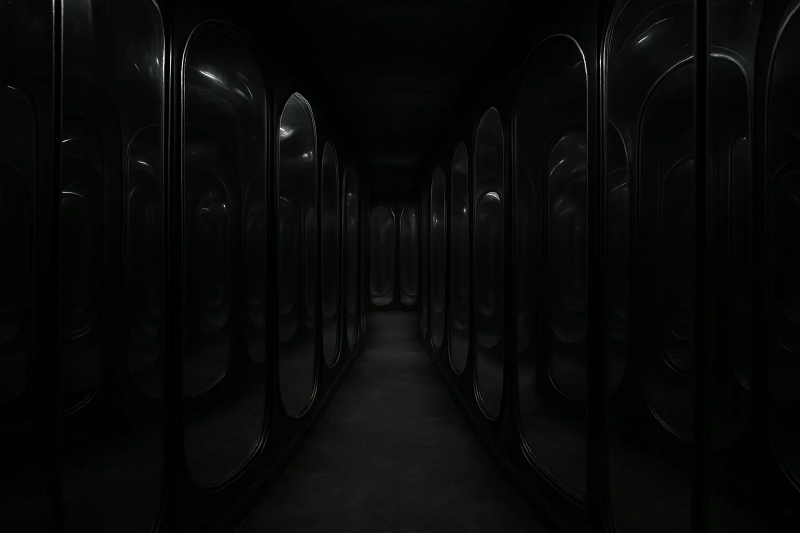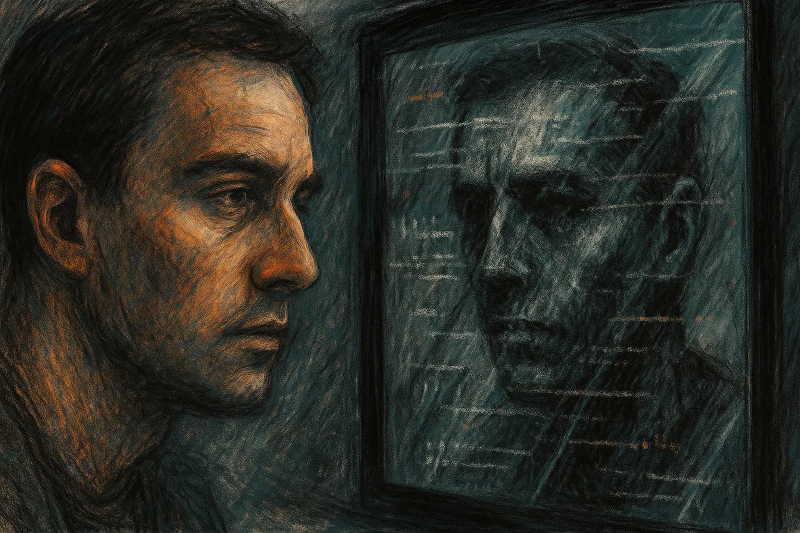The Day the Flame Was Lit
January 1992. Somewhere in the primordial swamp of Usenet, in a corner called comp.os.minix, Professor Andrew S. Tanenbaum, father of MINIX and patron saint of academic order, drops a bomb: “Linux is obsolete.”
That sentence, typed in plain ASCII and pure arrogance, lands squarely on the screen of a 22-year-old Finnish student named Linus Torvalds. His reply is calm, sarcastic, and surgical. Thus begins one of the first great Internet flame wars, and accidentally, a philosophical debate that would shape decades of computer design: microkernel versus monolithic kernel, Platonic order versus evolutionary mess.
Read MoreThere was a time when the glow of a CRT monitor felt like a portal. The green flicker of a C:\\> prompt was more than a command line — it was a promise that magic could happen if you knew the right incantation.
In The Dream of AI and Our Mirror I wrote about imagination as the fuel of coevolution. Nostalgia is part of that imagination. The memory of BASIC lines typed under a buzzing monitor, or the thrill of seeing the first sprite appear on screen, shaped the way we still approach technology today.
Read MoreProgress is rarely a straight line. It looks more like a gym session: repetition, fatigue, small victories that pile up into transformation. With artificial intelligence, the same logic applies. We do not simply “use” these systems — we train with them, and they train us in return.
In Progress Always Sends You Back to the Gym, I explored this metaphor of discipline. Every leap forward is followed by the need to rebuild our balance, to strengthen muscles we didn’t know we had. Technology doesn’t solve the effort: it demands new kinds of endurance.
Read MoreA mirror is never entirely innocent. It doesn’t just reflect — it frames, distorts, sometimes even betrays. With artificial intelligence this risk multiplies: what we see is not a neutral image, but one filtered through the lenses of training data, cultural bias, and our own expectations.
In When the Mirror Warps, I explored how language models can twist reality into something that feels familiar but is subtly altered. Like a carnival mirror, the reflection keeps our outline recognizable while stretching or compressing the details. The danger is not in the distortion itself, but in the fact that we stop noticing it.
Read MoreMirrors have always had a double face. On one side they return what we are, on the other they hide the illusion of a reflection that seems truer than truth itself. With artificial intelligence, the game becomes even subtler: we think we are looking inside an algorithm, but in reality it is the algorithm that reflects our own image back at us.
In the first article of the series, Why an AI can’t be your friend?, I tackled the most common myth: the idea that a language model can be a “friend.” The truth is that behind every dialogue there is no affection, only statistical patterns. The illusion emerges from the human desire to recognize ourselves in something that replies with familiar words.
Read More
